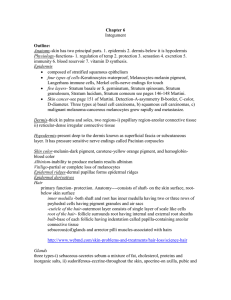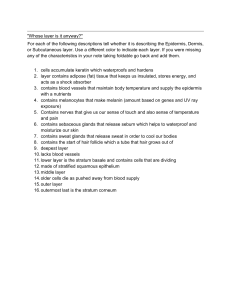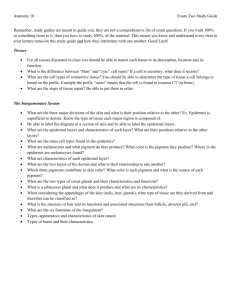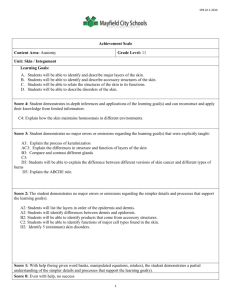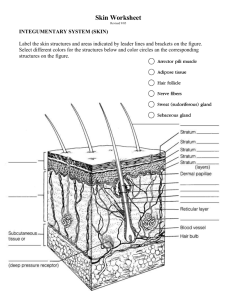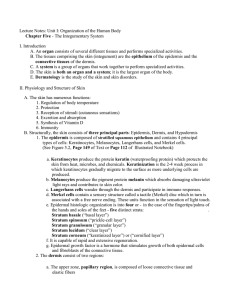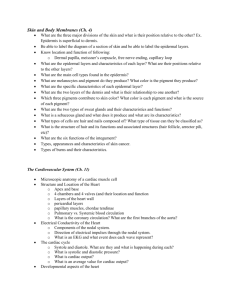Integumentary worksheet - whs
advertisement
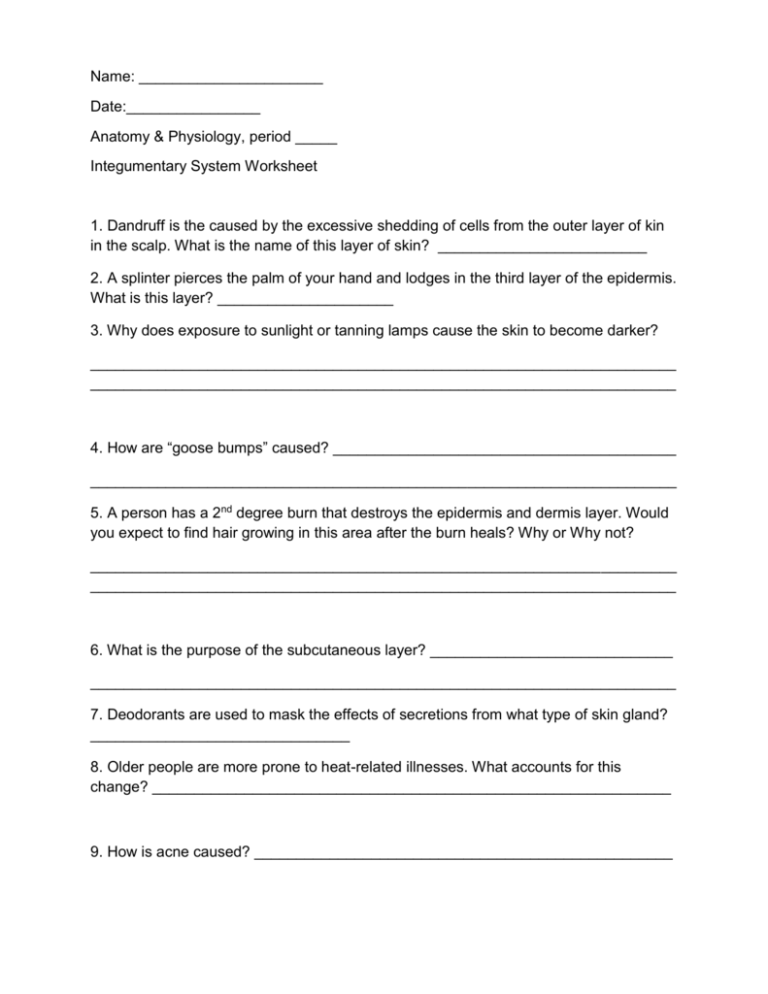
Name: ______________________ Date:________________ Anatomy & Physiology, period _____ Integumentary System Worksheet 1. Dandruff is the caused by the excessive shedding of cells from the outer layer of kin in the scalp. What is the name of this layer of skin? _________________________ 2. A splinter pierces the palm of your hand and lodges in the third layer of the epidermis. What is this layer? _____________________ 3. Why does exposure to sunlight or tanning lamps cause the skin to become darker? ______________________________________________________________________ ______________________________________________________________________ 4. How are “goose bumps” caused? _________________________________________ ______________________________________________________________________ 5. A person has a 2nd degree burn that destroys the epidermis and dermis layer. Would you expect to find hair growing in this area after the burn heals? Why or Why not? ______________________________________________________________________ ______________________________________________________________________ 6. What is the purpose of the subcutaneous layer? _____________________________ ______________________________________________________________________ 7. Deodorants are used to mask the effects of secretions from what type of skin gland? _______________________________ 8. Older people are more prone to heat-related illnesses. What accounts for this change? ______________________________________________________________ 9. How is acne caused? __________________________________________________ 10. Label the parts of skin on the diagram below. Match the each item in column A with the most closely related item in column B. Column A Column B _____1. Cutaneous membrane a. arrector pilli _____2. Carotene b. cyanosis _____3. Melanocytes c. perspiration _____4. Epidermal layer with stem cells d. sebum _____5. Smooth muscle e. stratum corneum _____6. Epidermal layer with flattened dead cells f. skin _____7. Bluish skin g. orange-yellow pigment _____8. Sebaceous glands h. bone growth _____9. Merocrine glands i. pigment cells ____10. Vitamin D3 j. stratum basale (germinativum)
